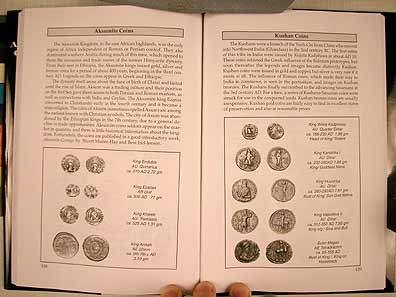
| Introduction | Characteristics of Money | Classification of Numismatic Web Sites | The Web Sites |
Conclusion
The web offers two distinct advantages in presentation to the numismatic historian; numismatic objects are small and can be displayed on the computer screen at several orders of magnification, thus making their imagery and text much more accessible than is ordinarily possible. A related advantage is the ability to present several different images of details of an object. Both of these advantages can be realized in traditional formats, but at much greater cost and with less elegance. An example would be the standard format for scholarly printed works on numismatics, which consists of the first section composed almost entirely of text followed by a section of plates, forcing the reader to constantly flip back and forth as they read through the work. Historically, this format was adopted for reasons of cost and ease of layout - numismatic articles and books often include dozens if not hundreds or thousands of images of coins that need to be reproduced on high quality paper in order to view the details of the objects, which are conventionally depicted at actual size.
Obviously, the web offers opportunities to strengthen the connection between the text and the objects, but I also believe that it offers advantages through freeing the form of numismatic histories from strict linear development, creating the possibility of presenting strictly numismatic narratives linked to broader historical perspectives. Examples include the use of image maps to allow visitors to locate coins with their find sites or their points of origin.
None of the reviewed sites has truly approached a format uniquely suited to the web, but there has been an approach to the development of a set of standard layout forms for numismatic sites. Characteristics common to most numismatic websites are the use of a database of images accompanied by short identifier labels, often presented as lists on their own pages, to which the narrative portions of the site link. Almost all sites use thumbnail images of coins at almost life-size linked to enlargements. To date, few sites have attempted to present new research or analysis in the form of die-link studies or other advanced numismatic methods despite the utility of web-based imagery. Interestingly, the design of numismatic websites seems to have begun to influence the layout of traditional numismatic works, particularly in the use of images interspersed with text and a "modular" approach to chapters as exemplified in the following image from Wayne Sayles "Ancient Coin Collecting," part of a six volume series.
